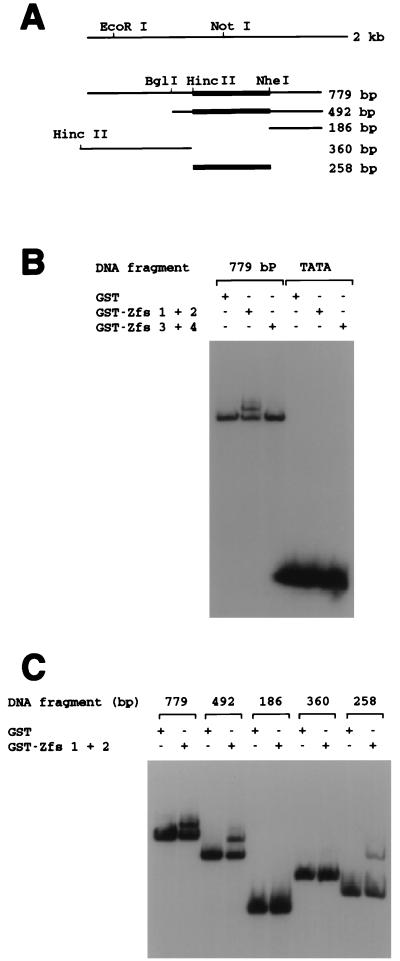Figure 3.
Binding of the pTRG1 insert and its subfragments to Zfs of basonuclin. (A) Schematic of the subcloned human genomic DNA. The left end of the 360-bp fragment was created by digesting the vector sequence with HincII instead of EcoRI. (B) Gel-shift assay of binding between the 779-bp DNA fragment and Zfs coupled to GST. GST–Zfs 1+2 (40 ng), GST–Zfs 3+4 (60 ng), and GST itself (40 ng) were each incubated with the 32P-labeled 779-bp fragment (7.5 fmol), and the mobility of the DNA was tested by electrophoresis through a 4% nondenaturing polyacrylamide gel. A 32P-labeled 25-nucleotide oligomer containing TATA (17 fmol) served as a control. GST–Zfs 1+2 bound to the 779-bp fragment, but GST–Zfs 3+4 did not. No Zfs bound to the fragment containing TATA. (C) GST–Zfs 1+2 binding to subfragments. GST–Zfs 1+2 (40 ng) or GST itself (40 ng) was incubated with each labeled fragment (4,500 cpm; 779-, 492-, 186-, 360-, or 258-bp DNA), and the mobility of the DNA was assayed. A binding site for GST–Zfs 1+2 was present in the 799-, 492-, and 258-bp fragments, as indicated by thick lines in A, but not in the 186- or 360-bp fragments.

